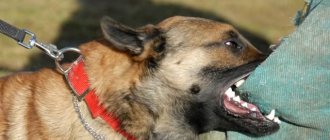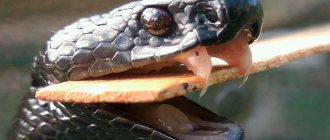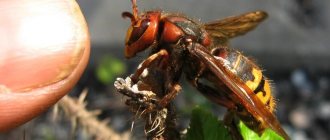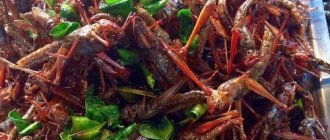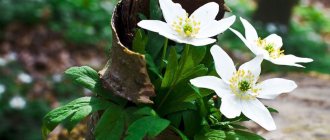Cross spider
There are about 600 species of spiders with a cross on their back. They live almost everywhere, preferring places with a humid tropical climate. They can be found in forests, parks, and near reservoirs; they often settle in abandoned buildings. The size of the spider does not exceed 4 cm, the color varies from yellow-brown to dark gray, depending on the habitat. The crusader feeds on small insects. It does not pose a serious danger to humans, but it can bite through the skin and inject a small amount of poison. People most susceptible to poison may experience severe headache, weakness, itching at the bite site and other unpleasant symptoms. The pain from the bite itself is tolerable and goes away quite quickly.
Safe types
It should be noted right away that absolutely all spiders are poisonous, but only a few will be dangerous to human health - arthropods with highly toxic poison. In this chapter we will look at those whose venom is lethal exclusively to insects.
House spiders
These are perhaps the most famous and most common spiders living in Russia. They got their name because they love to be neighbors with people - they can be found in a private house, in a city apartment, and in outbuildings. This spider usually weaves a funnel-shaped web in dark corners under the ceiling or in more secluded places, for example, somewhere behind a closet. The owner himself usually sits in the center of the fishing net and patiently waits for the prey to fall into it. And as soon as the victim is in the web, the spider runs up to her with lightning speed and immediately straightens out.
You can recognize a house spider by the following signs:
- the integument is yellowish-gray or brownish-gray;
- on the back there are usually brown spots arranged in a pattern;
- the legs are dark brown, their length is approximately twice as long as the body;
- The size of females is about 12 mm, the male is no more than 10 mm.
Knitting spiders
There are quite a few species of crocheters, and these spiders are found in Russia more often than others. They are distributed throughout the country and live exclusively in natural conditions. Their trapping nets are circular in shape and have very large meshes. Because of them, at first glance, it may seem that such a web is not suitable for hunting. However, it is not. The net is designed for a specific victim, namely long-legged mosquitoes, which are a favorite delicacy for knitters.
The knitting spider has the following description:
- elongated body;
- legs are long;
- chelicerae are covered with numerous projections;
- Females are usually about 10 mm in size, males are somewhat smaller.
This is interesting! When in danger, the knitting spider extends its legs along its body and becomes like a tiny straw. If you disturb him, he will immediately throw himself down like a stone and try to hide!
Mouse spider
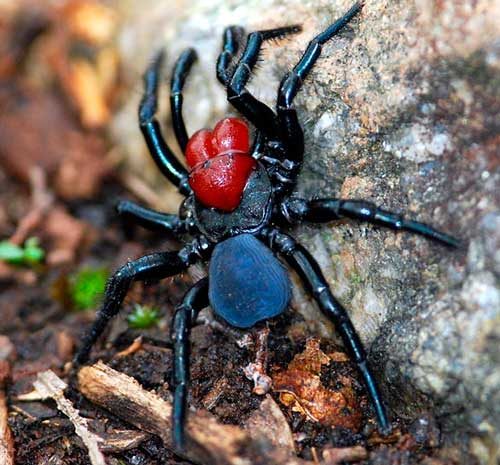
This representative of arachnids, growing up to 3 cm, lives in Australia. Males have an unusual appearance: a black, sometimes bluish body, a bright red head and the same chelicerae. Females are usually one color - black. The spider feeds on small insects, luring them into cleverly woven webs. In humans, its bite causes severe pain, and the place where it stuck its jaws may swell. But the spider “saves” its poison, so in most cases, people are not in danger. There have been no recorded deaths from encounters with mouse spiders.
South Russian tarantula
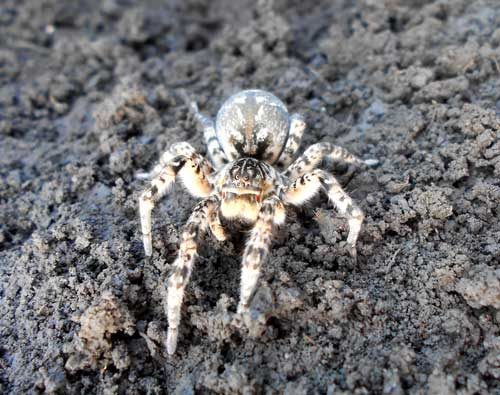
Mizgir, as this spider is called differently, lives in Siberia and southern Russia. This is a small spider, its body length does not exceed 3 cm. For hunting and a comfortable life, it settles in a hole at a depth of 40 cm and lines the entrance to it with cobwebs. He is not hostile to people and rarely bites. But if he does this, he will definitely inject poison. The bite of the South Russian tarantula is very painful, often there is extensive swelling in the affected area, and the skin may turn yellow. But it does not lead to death.
Golden (yellow) spider

A small spider, reaching a length of 2.5 cm with its legs, is found in Europe, southern Africa, eastern Asia and the Australian continent. Its body is generally pale yellow with dark brown chelicerae. It prefers to live in bushes and thickets, but can also be found in rocky areas. The golden spider is one of the most biting, and its poison, although it does not lead to death, does cause many unpleasant consequences. In particular, after a painful bite, a person experiences nausea, a fever, blisters appear on the affected area of the body, and then itching.
Danger in Crimea: spiders to avoid
Of course, the most dangerous spider inhabiting the Crimean lands is the karakurt. As it became known, meetings with them very rarely end peacefully!
In second position in terms of danger in Crimea is . It is also called a centipede. This animal is not at all interested in humans as prey, but incidents of bites do exist. It is not difficult to avoid encounters with centipedes, since they are mainly nocturnal. When biting, the centipede injects a special substance, which is an analogue of gastric juice. It is this that causes inflammation, which quickly swells and begins to hurt. But these symptoms quickly pass, and the person feels as before.
You should be afraid of the ones that live on the southern coast of Crimea. Like centipedes, they are active at night. They differ from other arthropods in their high speed of movement. They bite humans only during defense; their bites are non-venomous. But you also need to be wary of salpugs: during a bite, the animal suffers a lot of infection, which can lead to serious suppuration of the wound. The bite must be sucked out without swallowing infected saliva. After this, it is imperative to clean the wound with an antiseptic and systematically smear it with a gel containing an antibiotic.
Argiope is another representative of arthropods that can cause harm to humans. The yellow-black coloration and body length up to 1.5 cm emphasize their resemblance to wasps. These spiders are interesting because the females eat the males. Argiope bites are quite dangerous for humans, since an allergic reaction can provoke severe forms of abscesses, and in rare cases, even tissue necrosis.
17 February 2015
Despite the fact that the territory of the Russian Federation for the most part does not have areas and climate suitable for the habitat of poisonous spiders, some of them are still found in the vastness of our Motherland. To avoid becoming a victim of dangerous creatures. Russia has a huge diversity of flora and, and its vast expanses are home to more than 40 species of arachnids from 32 families, for a total of about 1070 species! However, despite their attractive appearance, some individuals can be quite dangerous not only to humans, but also to animals.
The most dangerous spider, rarely found in Russia, is the karakurt, which is often called the “black widow”. The appearance of the arthropod is quite bizarre: the body has 30 bright red dots located on the upper side of the abdomen, the body itself is a rich black color. As the spider matures, the red dots on its abdomen disappear and it acquires a rich, shiny black color. This type of poisonous spider can be found in the Crimea, the North Caucasus, and the southern part of the Urals. After a karakurt bite, poison instantly spreads throughout the body, causing severe pain and poisoning. If measures to save the victim are not taken in a timely manner, death is possible. Moreover, only their females can be more dangerous than karakurts. If the bite of a poisonous spider could not be avoided, it is necessary to very quickly cauterize the bite site with burning matches and send the victim to the hospital as quickly as possible, where he will have to lie for at least two days.
Poisonous spiders are rare in Russia
Another no less dangerous spider living in Russia is the South Russian tarantula, which is sometimes called Mizgir. This arthropod is no more than 30 mm in size, reddish in color with a darker abdomen. Tarantulas mainly live in the few deserts on our territory, but sometimes they are spotted in the Oryol, Saratov, and Rostov regions. A distinctive feature of a tarantula is its black cap, which identifies it among its harmless companions of the same color. A tarantula bite, although not fatal, can cause severe allergies, and in people susceptible to allergic reactions, anaphylactic shock is possible, which can be fatal if not treated promptly.
The third place in danger among arthropods is occupied by the eight-legged Cheiracanthium, which, although quite peaceful, if it senses danger, it can bite painfully. Cheiracanthium has an oblong body of light yellow color. The spider lives in the North Caucasus, but is sometimes seen in Russia.
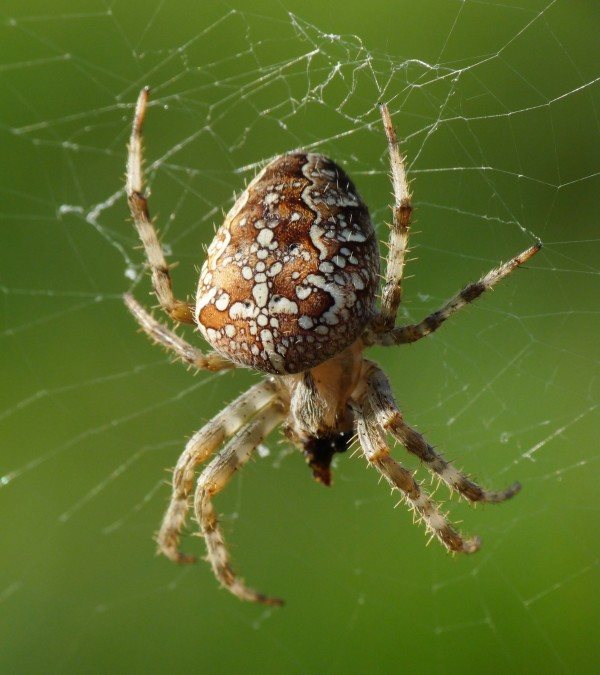
The web spider is one of the safest poisonous spiders, belonging to the subspecies of cross spiders, which got their name from the cross-shaped pattern on the abdomen. This type of spider belongs to the family of orb-weavers, which spin large, radical webs. The size of the web spider does not exceed 25 mm in length, and the body can shimmer in different colors. This spider, like Cheiracanthium, can only be dangerous if it gets scared. The venom of the web spider is practically harmless, but its bite can cause blood infection, so you should consult a doctor as soon as possible.
When vacationing in Crimea, you should be wary of karakurts, meetings with whom most often end in problems. It is no less dangerous to encounter scolopendra on the Crimean coast, whose home representatives are simple centipedes. Even though the scolopendra does not consider humans as prey, its bites are not uncommon. It’s easy not to get caught in the path of centipedes: they are nocturnal animals. When a scolopendra bites, it injects an analogue of gastric juice into the victim’s blood, which leads to inflammation, swelling of the bite site and severe pain, which, however, quickly passes and nothing threatens the person.
All types of spiders attack when they sense danger
Salpugs, or phalanges, are also not uncommon in the Crimea, and together with centipedes they lead a nocturnal lifestyle. A person can only be bitten in self-defense; the bite, although not poisonous, together with saliva can transmit a lot of infection into the blood, which will lead to suppuration. Therefore, immediately after a bite, saliva must be immediately sucked out and spat out without swallowing, and then washed with an antiseptic with an antibiotic.
Argiope is a representative of arthropods that harm humans, has a length of up to 1.5 cm and is similar to wasps. The interest of these spiders is that the females eat their males. The danger of argiope lies in a severe allergic reaction, accompanied by severe forms of abscesses, and sometimes tissue necrosis.
The list of dangerous spiders living in Russia concludes with the Crimean tarantula, whose length is no more than 3.5 cm. The spider is light gray in color and lives in burrows that it digs in the Crimea. The Crimean tarantula attacks only when it senses danger. When attacking, this spider takes a pose in which it raises its front legs up, resting on its hind legs. Its bite is no more painful than a wasp bite, but in some cases it can even provoke fever, nausea, chills and inflammation of the lymph nodes. Therefore, the bite site needs to be treated.
A person often encounters spiders - this can happen at home, in the forest, on the beach or on a hiking trip. Therefore, it is advisable to know which of the representatives of the spider genus should be feared and preferably avoided, and which should not be paid attention to. This article examines what poisonous spiders live in Russia, what is the degree of their danger, how their bite threatens a person, and how to provide first aid to the victim.
Six-eyed sand spider
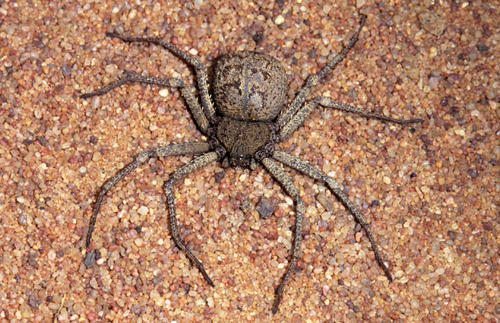
This cunning hunter lives in the deserts and dunes of southern Africa. Its length, taking into account the straightened legs, is on average 5 cm. The color of the spider’s body can be yellow or brown, which helps it camouflage itself while hunting insects. For people, the toxic bite of a six-eyed spider is extremely dangerous, since there is simply no antidote to it. There is some comfort in the fact that the spider itself is in no hurry to bite, preferring to stay away from people. Therefore, only isolated cases of death from its bite are known.
Brown Widow
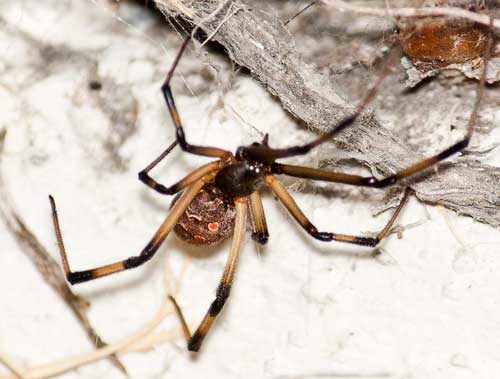
Mainly lives in the southern regions of the USA, the Middle East, Australia and Cyprus. The size of the spider does not grow more than 3 cm. The body color varies from yellowish with brown legs to a richer brown, sometimes even gray or black. On the belly there is a bright distinctive sign, reminiscent of an hourglass in shape.
Although this spider belongs to the genus of the well-known black widows, it bites much less often than its fellows. Due to his timidity and non-aggressive nature, he prefers to stay away from people. The brown widow's venom is toxic, but no deaths from its bites have been recorded.
Australian widow
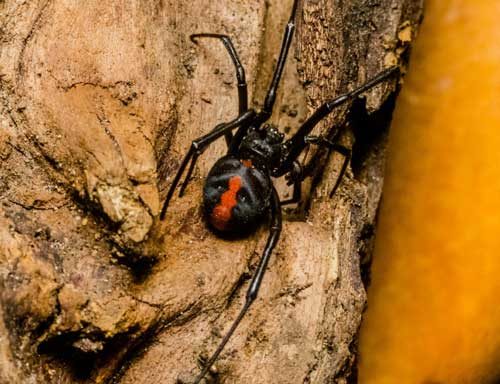
This is one of the most dangerous representatives of its kind. The distinctive feature of the Australian killer is a red stripe along the black body. The female does not grow more than 1 cm in length, but this is the case when size does not matter. The redback spider's venom is so toxic that it can easily kill even poisonous snakes.
Meeting a person with an Australian widow is a common thing, since she often lives in urban areas. The greatest threat is to children and the elderly. Thanks to the antidote, the bitten people can be saved, but they have to endure terrible pain.
Brown recluse spider
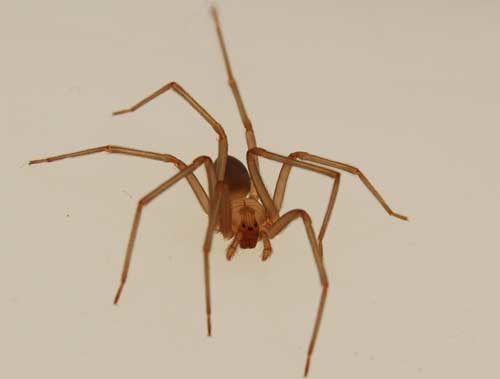
This seemingly miniature spider terrifies residents of the southern states of the United States. The length of its body together with its legs is only 2 cm. It has a brown or dark sand color, and on its head you can see a mark that looks like a violin.
The violin spider lives where it is dark, dry, warm and quiet. Often chooses places in urban environments, inhabiting attics and basements. Does not like to be seen, prefers to be nocturnal, hunting insects and small relatives. The venom of a recluse spider in large doses is very toxic; a person may develop extensive tissue necrosis at the site of the bite. The situation is complicated by the fact that often a person does not feel the bite and does not seek medical help in time. Deaths have been recorded mainly in people with weak immune systems.
The most dangerous and poisonous spiders
In a dark corner you can often find a cobweb, which indicates that its owner is lurking nearby. Most of the domestic spiders living in central Russia do not pose a danger to people; these small arthropods themselves try to avoid meeting them. But in regions where the climate is hotter, other spiders live - poisonous and dangerous.
Karakurt (black widow)
Appearance
— the body of the spider is black; in young specimens, thirteen scarlet spots with a snow-white edge are clearly visible. Mature spiders lose their spots, their body and legs are a solid black-glossy color. Karakurt males are 3–4 times smaller than females; the diameter of the body including legs is approximately 7 mm. The size of the spider varies from 12 mm to 2 cm. Among the arachnids found in the Russian Federation, karakurt is the most poisonous representative of the black widow genus.
Habitat
- these poisonous arthropods can be found in the Saratov, Kurgan, Orenburg, Rostov, Novosibirsk and Volgograd regions. When long hot periods occur, arachnids migrate north and can spread almost to the Moscow region. When winter comes in the northern regions, they die.
Consequences of a bite
— the venom of these spiders is very toxic and dangerous to humans. But it is worth remembering that karakurts are not aggressive and do not attack people without reason. Bites always occur when a person comes into direct contact with a spider (stepped on, crushed) and in this case he simply defends himself. The poison begins to act immediately. A quarter of an hour after the bite, people clearly show the first signs of poison entering the blood.
Symptoms of a karakurt bite:
- pain throughout the body; Particularly painful sensations appear in the lumbar region, abdomen and chest;
- the abdominal muscles involuntarily tense;
- difficulty breathing (shortness of breath);
- limbs tremble;
- pallor appears;
- pulse and heart rate increase;
- your head starts to hurt and feel dizzy;
- attacks of nausea occur;
- skin hyperemia occurs.
South Russian tarantula (mizgir)
Appearance
- quite common in the Russian Federation and such a large poisonous spider as the South Russian tarantula.
Females are slightly larger than males, their body size reaches three centimeters. The size of male South Russian tarantulas is about 2.5 cm. The South Russian tarantula has a chitinous shell and legs covered with short, stiff hairs. The body color can be brown, brown or gray; red-haired individuals are also found. The upper body has a pattern of alternating light and dark spots, which extends to the legs. Habitat
- tarantulas of this species live in areas with a dry climate, preferring steppe, desert and forest-steppe. They are located in deep burrows; the depth of the spider's housing can reach 40–50 cm. A spider's burrow is never located horizontally - its direction is kept strictly vertically downwards. The spider's home is lined with several layers of its web.
This spider also hunts without the use of a web - it sits in a hole for days and waits for a victim to pass by so that it can attack. He chooses the moment to attack the victim by noticing a shadow falling on the hole. When attacked, poison is injected into the victim's body. South Russian tarantulas live in the south of Russia: in the Astrakhan, Saratov, Belgorod, Kursk, Lipetsk, Oryol and Tambov regions.
Important!
In the Russian Federation, a special anti-karakurt serum is used to treat victims of bites of these poisonous arachnids.
Consequences of a bite
— the poison of South Russian tarantulas is not very toxic; a person does not die after being bitten by this spider.
The bitten area usually swells slightly, and the skin at the bite site may turn yellow and remain that way for 55–60 days. Symptoms of a Mizgir bite:
- pain, redness and swelling in the affected area;
- necrotic tissue damage;
- malaise and weakness;
- drowsiness, fever.
Did you know?
The Lycosa tarantula is a large, hairy spider native to southern Italy.
In the Middle Ages, it was believed that in order to get rid of the consequences of its bite and not die, you need to make high jumps - this is where the name of the Italian dance “tarantella” comes from. Appearance
— the color of the body can be yellow, the color of coffee with milk, or slightly greenish.
The size of the arachnid ranges from 5 mm to 15 mm. The shape of the belly is teardrop-shaped, the front pair of legs are twice as long as the body. Cheiracanthium spiders, Latin name Cheiracanthium punctorium, are one of the most dangerous arachnid species in Russia. Habitat
- this species is common in central Russia (Leningrad region, Voronezh region, etc.), its representatives prefer to live among tall thickets of grass, in bushes. These spiders do not weave webs, but hunt insects based on tactile sensations. Upon direct contact, sensing the victim nearby, the spider attacks and bites it. They feed on caterpillars, cicadas, moths, aphids and mites.
Consequences of a bite
- Males and females of Cheiracanthium punctorium are extremely poisonous to humans. The pain from their bite disappears only after 10–20 hours, swelling and redness disappear after a few days.
Symptoms of a Cheiracanthium bite
:
- severe burning pain at the site of the bite;
- after a few minutes, the pain spreads along the bitten limb, with no muscle spasms or itching of the skin;
- lymph nodes swell and ache;
- after some time, swelling appears in the bite area and the bitten area loses mobility;
- Some victims find it difficult to breathe.
Phalanx (salpuga)
Appearance
— the body of the phalanx is simply huge and reaches a length of seven centimeters, it has 5 pairs of paws (10 pieces) and large cheliceral claws;
at the slightest alarm, the arachnid begins to rub them, emitting a squeak or chirping sound. The color can be light yellow, red or dirty brown. The power of the chelicerae of the phalanx is such that it can easily bite through a bird bone or pierce the skin of a small animal. This is a very dangerous, aggressive towards humans, but practically non-toxic arthropod. Habitat
- Salpuga prefers regions with hot (tropical and subtropical) as well as temperate climates as a habitat. It happily settles in deserts, semi-deserts and steppes. The habitats of the phalanx in the territory of the former USSR are the Crimean Peninsula, Central Asia and the northern Caucasus.
Consequences of a bite
— salpuga has no poison, but its bite is very painful and leaves behind a deep wound. The arthropod runs very fast (16 km per hour) and jumps high (80–100 cm), while being aggressive towards everything that moves. If a salpuga is noticed by a person, it is better to avoid it and not come closer than two meters.
Symptoms of a phalanx bite
:
- skin wound;
- redness;
- swelling of the bite site.
Did you know?
Instead of weaving a web and waiting patiently for an insect to be caught in it, as their relatives do, Gnathosidae spiders prefer to “shoot” the web directly at their prey, leaving it entangled.
These arachnids served as inspiration for the Spider-Man comics. Appearance
- among representatives of the family of web spiders (or cross spiders), Latin name Araneus, females reach a size of 2–2.5 cm, and the male rarely grows more than one centimeter.
In the front of the cephalothorax there are 4 pairs of eyes. The body is covered with a protective layer of a substance similar to wax. Crosses are gray or brown in color; on the upper part of the spider’s belly a pattern in the form of a cross is clearly visible. The pattern, in contrast to the body coloring, has a slightly lighter shade. During mating, the female devours the male. Crusaders hunt using webs: they sit in a shelter and wait for prey to fall into a trap. The web spider family has more than 200 species, with about 30 species inhabiting the vast expanses of Russia. Habitat
- crossbills inhabit forest areas, preferring to live in spruce and pine forests. Also, the web spider is often found in swampy areas; less often it can be seen in orchards and open meadows. Their habitat is central Russia.
Consequences of a bite
— the venom of the web spider is toxic; it contains substances that act on the neuromuscular connection, that is, they paralyze the victim. For a locust, frog or mouse, the poison is fatal, but not for humans, since the amount of poison injected under the skin is negligible in relation to the weight of the victim. Simultaneously with a spider bite, an infection can enter a person’s muscles, tissues or blood, so you must consult a doctor.
Symptoms of a crossworm (networt) bite:
- pain in the back of the head, temples and joints;
- loss of strength, weakness;
- burning and other painful sensations;
- bleeding under the skin (bruises).
Did you know?
Caerostris darwini is a tiny spider native to Madagascar.
Being only a few millimeters long, it produces huge webs: up to 25 meters in diameter. But that’s not all - the thread of the web woven by this arachnid is more resistant to destruction than steel or Kevlar. Appearance -
in the bag spider, the Latin name sounds like Cheiracanthium punctorium, the body is brown or greenish-brown, smooth, its length reaches 15–16 mm.
The arachnid has 8 long, mobile, jointed legs that are the same color as the body. Females secure their cocoons with eggs on tall and strong blades of grass. The clutch is protected by the spider until the cubs are born. These arachnids occupy the bottom lines in the ranking of spider venomousness. Habitat
- pouch spiders are widespread in central Russia and the south of Russia (Krasnodar Territory), they love a dry and warm climate. They inhabit deserts, semi-deserts, and rocky wastelands. Along with climate change, they migrate towards warming to regions much further north.
Consequences of a bite
- the bagworm bites painfully and sharply, its bite is similar to the sting of a bee or wasp. The symptoms that appear after the bite remain with the victim for approximately 3-4 days. If possible, it is better to avoid direct confrontation with this spider, as its venom has necrotic properties. Spiders themselves do not want to meet people, and never attack. Only the female guarding the clutch can show aggression.
Symptoms of a bagworm bite:
- burning pain when bitten;
- swelling and redness;
- pain in the temples, fever rises;
- vomit;
- necrosis.
Did you know?
Spiders move mainly along those “rays” of the web that are less sticky - this gives them the opportunity to move around the web without getting stuck in their own web.
Their legs are covered with tiny oily hairs, allowing them to glide along the threads like ice skates. Appearance
- false black widow or steatoda, Latin name Steatoda grossa, looks similar to karakurt (real black widow), and is no less dangerous.
Females are colored red-brown or black, with lighter spots in the background. The length of the spider varies from 6 mm to 10 mm in length, the male grows no more than 4–6 mm. The belly is swollen and round in shape. The main difference between a steatoda and a real black widow is that there is no scarlet pattern on the body, as well as other bright spots. The coloration of the male and female is very similar, but the body color of an adult male is always slightly lighter than that of the female. You can also identify the male by his paws - they are a little more reddish in color than those of the female. If water is available, these insects may not eat for several months. Habitat
- Steatoda grossa lives in Europe, Asia, and both Americas. In the CIS, this arachnid can be found in Russia or Kazakhstan. They prefer to settle in warm human dwellings, where they feed on flies, beetles and cockroaches. The false black widow also lives in forests.
Consequences of a bite
— the bite of a false black widow is toxic, but not fatal and does not leave long-term consequences. Steatoda grossa is absolutely not an aggressive species, and all bites occur due to the carelessness of people in direct contact with arachnids (stepped on, crushed). The venom of this spider causes discomfort in the victim, which completely disappears after a few days.
Symptoms of a false black widow bite
:
- muscle spasms;
- pain at the site of the bite;
- slight swelling;
- general weakness;
- sweating;
- fever.
Appearance
- the male of this spider is very elegant and brightly colored: long black legs with transverse white stripes (like a zebra) and a bright red body with four black dots in the center.
The female fathead looks more modest than the male: her body color is black, sometimes with yellow spots in the front of the body. The body length reaches two centimeters, the cephalothorax looks square, it is covered with short velvety black and thick hairs. The black fathead spider, Latin name Eresus kollari, is not poisonous to large mammals such as humans. Habitat
- as a place of residence, the fathead prefers regions with a dry and warm climate: southern Russia, the Crimean Peninsula, the Caucasus. Representatives of this species can be found in the steppe and forest. For housing, arachnids occupy rodent burrows, settle under stones, or dig a hole in the ground on their own. Eresus kollari hunts using web nets.
Consequences of a bite
— black fatheads sting very painfully. Their venom is not fatal to humans, but a bite from a black fathead will kill a small mammal (mouse or shrew) in a few seconds. A person will feel the consequences of a bite from this spider for five to seven days. However, they are not aggressive.
Symptoms of a blackhead bite
:
- painful sensation in the bitten area;
- swelling gradually appears;
- movements of a person’s arms and legs are difficult.
Appearance
- spiders from the genus Argiope are not poisonous to large mammals such as humans.
In the most common species of Argiope Brünnich (aka wasp spider), the male has a very modest size, not exceeding 0.5 cm. The female is much larger, her body length reaches three to four centimeters. The color of the female’s body is bright, with elegant black and yellow stripes, and from a distance it resembles the color of a wasp. The cephalothorax is covered with short hairs. The long jointed paws are black, with fragments painted pale yellow. Habitat
: They prefer to live in areas with temperate and hot climates. Here they are found in the south and in central Russia, in particular in the Stavropol Territory.
Consequences of a bite
- Argiope spiders have poison, but its degree of toxicity is low and is approximately on the same level as a bee sting. Like bees, spiders of this genus are not too aggressive and do not attack first. A spider can only bite if a person grabs it with a hand or steps on it with a bare foot. After a couple of hours, the painful sensations disappear, the swollen area returns to normal in two to three days.
Bite symptoms
:
- there is redness around the bite point with a diameter of 2–2.5 cm;
- a little later the reddened area swells and becomes insensitive to touch.
Important!
As a preventive measure, residential property owners need to clear cobwebs from the backs of large, rarely moved furniture, as well as ceilings, attics, and garages.
It is advisable to ensure that children wear long sleeves and long pants when playing around garages, attics or woodsheds. Wood for the stove or fireplace should be stored outside the home to prevent spiders from entering the living area. Because spider bites do not completely penetrate human skin in most cases, their venom usually causes only mild reactions. However, black widows and cheiracantium can cause a serious reaction in the body, and those affected need immediate medical attention. Allergic reactions can also occur, but are quite rare. If the victim has been bitten by a spider:
- Wash the affected area with soap and water.
- Apply an ice pack or a wet, cold cloth to relieve pain and swelling.
- Seek medical attention immediately.
Man shares his home, the Earth, with many other living beings. There are also spiders among our neighbors on the planet, so people would like to know which ones are poisonous and whether their bite is dangerous to health. Now you can take informed precautions.
A young girl from Barnaul was admitted to the Altai Regional Toxicology Center after buying fruit at the market. The “black widow” (as karakurts are popularly called) is hidden in these fruits.
For the first time, Altai toxicologists encountered the venom of the karakurt spider last year. At that time, there were 25 people bitten. This year, doctors predict, there will be more of them. If previously only individual karakurt individuals entered Altai from neighboring Kazakhstan, now the spider has begun to breed in the region.
Mutants in the city
In Siberia, arthropods atypical for our area are increasingly found - locusts (gregarious form), tarantulas. Now here are the karakurts.
Alexander DUBYNIN, program coordinator of the Sibecocenter,
explains that the reason for the appearance of representatives of unusual fauna can be both global climatic factors and human activity: “Every day, dozens of planes, hundreds of trucks bring exotic fruits and overseas flowers to us. Along with these goods come insects that successfully adapt to life in basements and sewage ponds, where it is warm and humid all year round, almost like in their homeland. For example, tropical mosquitoes came to us with bananas.” In recent years, insects hitherto unseen in Siberia survive not only in basements, but also in the wild - winters are becoming milder, summers are becoming hotter.
The ideal habitats for karakurt are virgin wormwood, steppe wastelands, banks of irrigation ditches, and slopes of ravines. Where there are hot summers and warm autumns. Among the global factors for the sharp increase in the number of karakurt spiders, scientists name intensive reproduction and migration of locusts due to global warming. Locusts are the basis of the diet of karakurts.
Galina AZARKINA, leading Novosibirsk arachnologist, employee of the Institute of Systematics and Animal Ecology
, says that “black widows” were first discovered in NSO territory 12 years ago. Cold winters contribute to the extinction of the species in our region, but they can gain a foothold here for a long time - the spiders are very tenacious and adapt well to new conditions: “One “black widow” gives birth to about 200 spiderlings. Even if 70% of the offspring die, a decent number of individuals remain.”
In urban environments, spiders, not only karakurt, but also other species, can change under the influence of exhaust gases and other man-made factors. Due to the increased mutagenicity of the environment, a change in the number of eyes and legs may occur (a normal spider has from eight to 12 eyes and eight legs), and the concentration of poison in the saliva may change.
Photo: AiF-Volgograd/Olga Zaporozhtseva
It will not be possible to etch
Anti-karakurt serum is used to treat black widow bites, but it is only available in the Altai Regional Toxicology Center. It was brought there from Uzbekistan in the amount of 10 doses. So there may not be enough for everyone. “Weeding out” karakurts like cockroaches will also not work. “The drugs used in urban disinfection centers do not work on them, since spiders have a different biological structure,” explains Irina TOKUNOVA, head of the Novosibirsk regional disinfection station
.
Alexander Dubynin said that scientific research is currently underway around the world to destroy dangerous insects using genetic engineering. The method, which is relatively safe for ecosystems, was recently used in the fight against malaria in Africa. As a result of crossing with bred males, the population of malaria mosquitoes in the next generation became 95% “male”, that is, not dangerous. We haven’t tried to fight karakurt like this yet.
The use of poisons such as DDT has been prohibited since the 70s. last century, since its ability to accumulate in the trophic networks of ecosystems has been proven - all animals, and especially predators, suffer from poisoning. Also, according to the newest hypothesis, DDT is one of the causes of immune-induced cancers in people living near areas treated with poison. Alexander Dubynin sees the future of the fight against dangerous insects in ultrasonic repellent devices and other similar technologies.
“I recently killed a strange spider with red specks in my apartment with a slipper,” a resident of the Dzerzhinsky district of Novosibirsk shares on social networks. - What if this is the same “black widow”? There is probably no vaccine in local clinics..."
If a spider is found, Galina Azarkina suggests carefully covering it with a glass, then slip a sheet of paper under the glass and in this form throw the animal away from the house. If a spider does bite you, Professor Pavel Marikovsky recommends cauterizing the bitten area with a flammable match head, but always no later than two minutes after the bite. Intravenous administration of novocaine, calcium chloride and magnesium hydrogen sulfate also gives good results, doctors say.
If we talk about poisonous animals in Russia, arachnids top the list, namely the poisonous spider called karakurt. It is the only Russian spider whose bite poses a mortal danger to humans. This creature lives in the southern regions of the country, in the North Caucasus, in the Orenburg region and in Astrakhan. Not long ago, cases of karakurts appearing in the Moscow region were recorded.
The female karakurt reaches a length (excluding the length of walking legs) of 2 cm. It is the females that are the main threat to humans, since small and weak males, for the most part, simply cannot bite through the thick layer of human skin. Karakurts have a black body color, a large abdomen, on which there may be bright spots of orange or red. However, there are also karakurts without any special markings.
The main feature that distinguishes karakurts from the rest is a pale spot on the underside of the abdomen. In its shape it resembles an hourglass. Sometimes this spot is not a pale color, but a bright color (like the spots on the back).
The South Russian tarantula is also one of the poisonous animals living in the south of Russia. Its bites are dangerous, but not fatal to humans.
Sydney funnel web spider
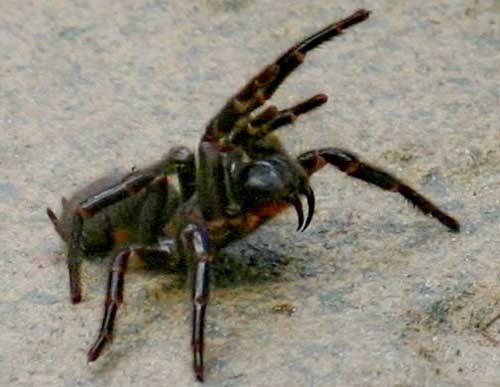
This is one of the most aggressive representatives of arachnids. Lives on the Australian continent. It prefers to settle in damp forests, on the coast under rocks, or close to people - in gardens and parks. The length of the spider usually does not exceed 5 cm. The color is dark brown or black, sometimes with copper stripes on the legs.
The bite of an atrax is painful, and thanks to its powerful chelicerae, it is able to bite through a leg even through leather shoes. Not every spider attack ends with the injection of poison, but if it does, then the person may face death.
Karakurt
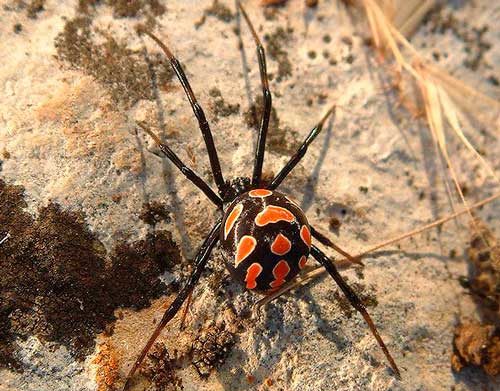
This spider is another representative of the black widow genus. Their distribution area is very vast; they can be found on all continents except Antarctica and the Arctic. Although the size of the karakurt is small - only 2-3 cm, it poses a mortal danger to humans. But only females are poisonous, and they attack only if they feel their life is threatened.
Bright red spots on the black body distinguish this spider from its relatives, but with age it can completely turn black. Karakurts settle mainly in dry places: on abandoned arable lands, near ravines. Sometimes they can visit people, crawling into houses, barns, garages and so on.
The bite of this species of black widows itself is not painful. But after a short time, when the poison begins to act, a person experiences severe poisoning. The place of the bite, and then the whole body, is pierced by a sharp pain, panic appears, it becomes difficult to breathe, and so on. A person is not in danger of instant death, but there is no need to delay in providing assistance.
banana spider
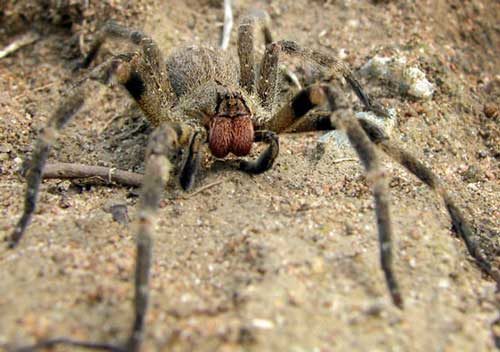
It is also called the Brazilian wandering spider, runner, or soldier spider. This dangerous giant killer lives in the forests of Central and South America. Its height with legs spread can reach up to 17 cm. In appearance, it is not very noticeable, apart from its large size. The most common individuals are dark brown in color.
Wanderers hunt at night, their prey is insects and smaller relatives, less often frogs, rodents and chicks. These spiders do not attack people without reason, but they can bite in self-defense. When meeting him, you should not try to scare him, since he is not a timid person, and he himself will begin to attack the perceived enemy. The banana spider's venom acts rapidly and can lead to the rapid death of a child or sick person if they are not given an antidote in time. The venom of this particular type of arachnid is listed in the Guinness Book of Records as one of the most dangerous on the planet.
Didn't find what you were looking for? Use the site search form
Features of character and lifestyle
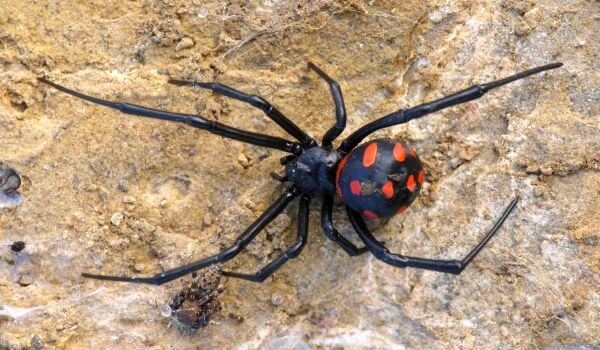
Photo: Karakurt spider in Crimea
This type of poisonous arthropod loves dry, hot weather. That is why their habitat region is strictly limited to warm, southern countries. Recently, cases of appearance and spread on the territory of the Russian Federation have become more frequent. Here they pose a serious danger to the population, since people do not always have information about their proximity to dangerous insects. Often, when cold weather sets in, they can penetrate directly into a person’s home.
They also cannot tolerate extreme heat and heat, and therefore, after the onset of extreme heat in some countries, they migrate to more northern regions. Spiders make their lair in inaccessible places - burrows of small rodents, crevices of concrete walls, low thickets of vegetation, and other places. The spider received its second nickname “black widow” because the female eats the male after mating. Moreover, this happens with each subsequent partner.
Scientists claim that even if, in rare exceptions, males manage to avoid the sad fate of being eaten, they still die, as they lose all interest in food and instinctively stop eating it. Karakurts tend to lead a rather hidden lifestyle. They can attack or attack only when they sense danger.


